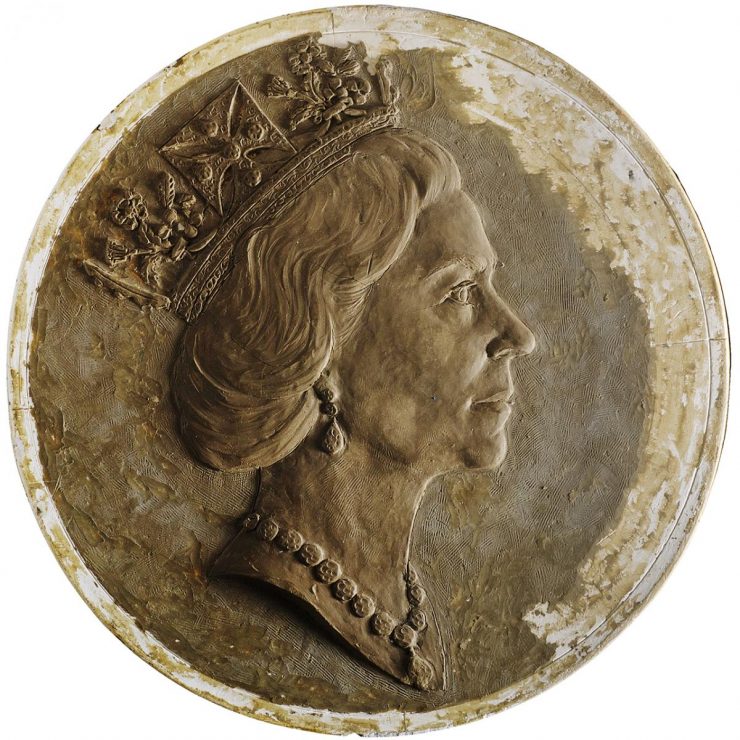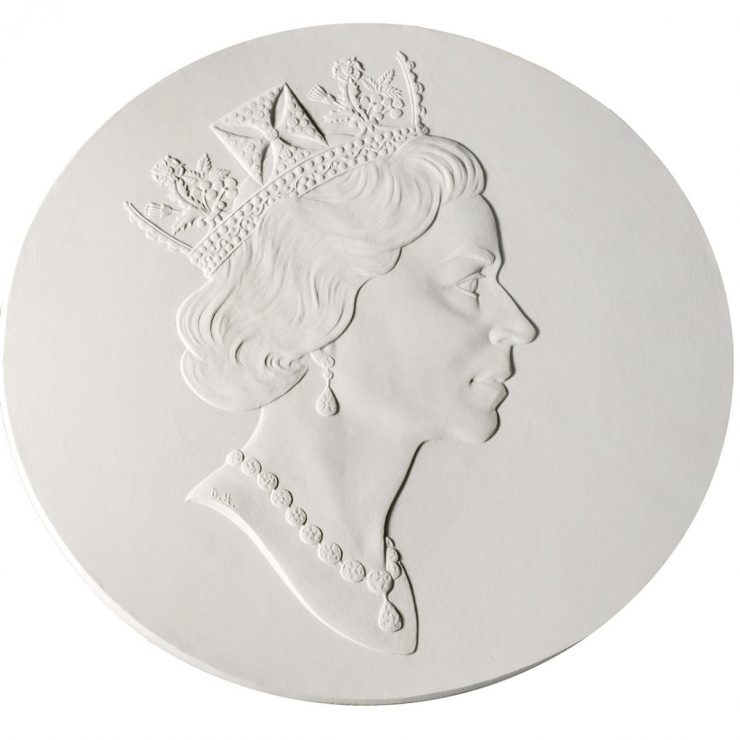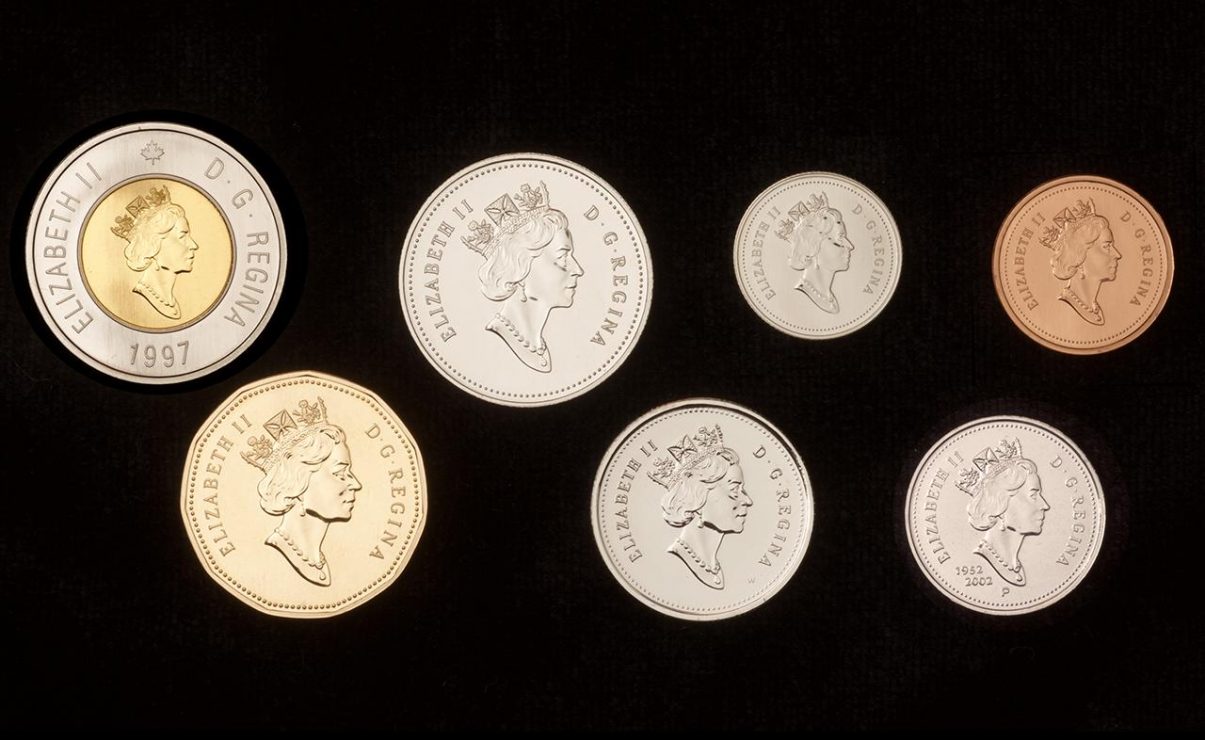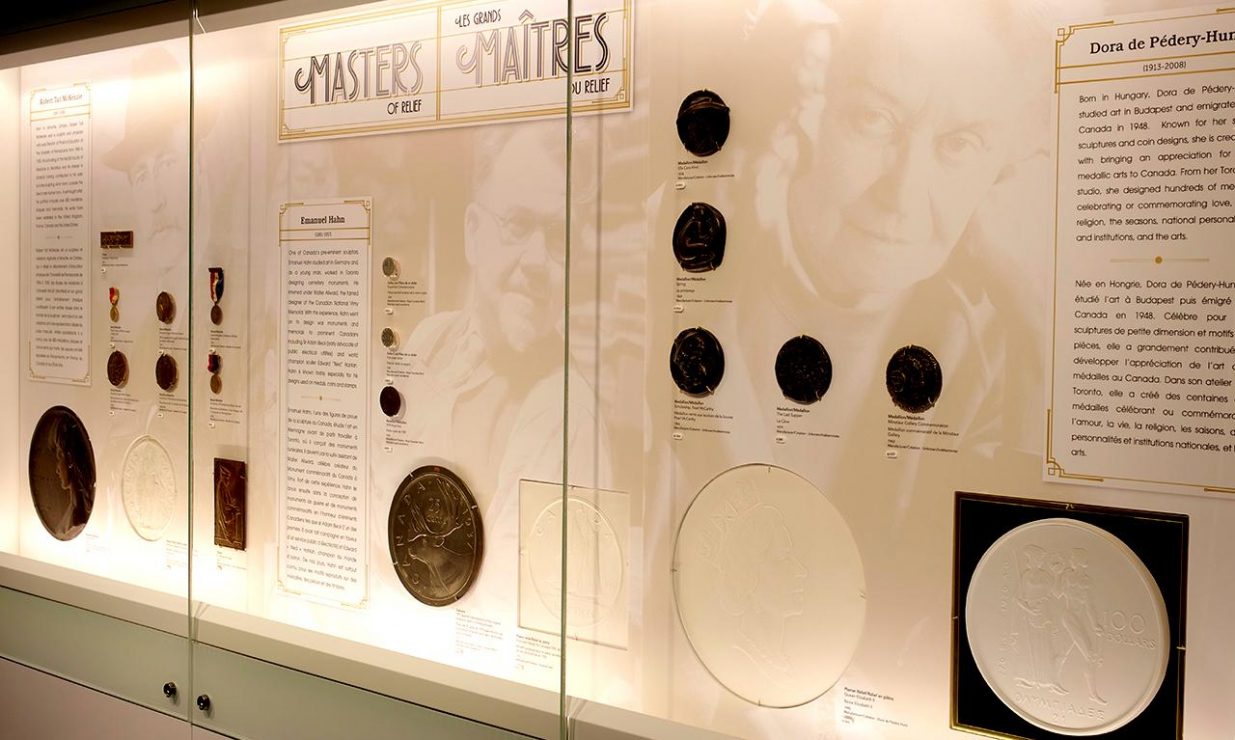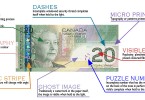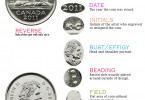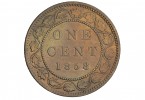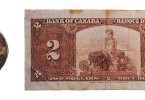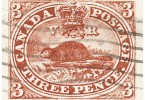Sculptor Dora de Pédery-Hunt
You will not see Dora de Pédery-Hunt’s signature on any coin, but you will see her initials on the Queen’s shoulder.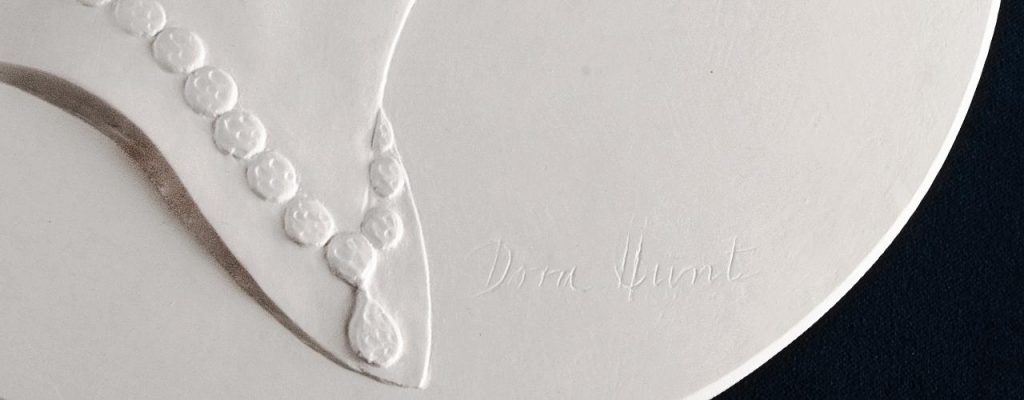
Limited Edition plaster reproduction of working model, #21 of 275. (NCC 2009.020.003)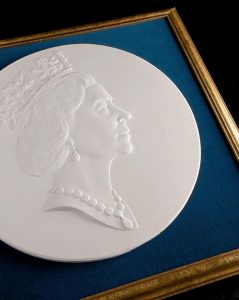
Dora de Pédery-Hunt’s work is as familiar as the change that jingles in your pocket. In all likelihood, you have come in contact with her work while using coins to pay for your morning cup of coffee. Dora de Pédery-Hunt was the first Canadian artist to design and sculpt an effigy of Queen Elizabeth II for coinage. Incidentally, this was the first time someone other than a British citizen had designed an official depiction of Queen Elizabeth II for this purpose.
When the Royal Canadian Mint (RCM) selected Dora’s design, she painstakingly began working on a clay model. All of the details had to be carefully considered, as the depth of the relief had to be suitable for producing coins. This model was then captured in plaster, where additional refinements could be made. Any errors could easily be corrected at this stage with the addition of more plaster. The size of the plaster is usually several times larger than the actual coin in order to capture all of the fine details.
At the time, there were many steps between the plaster model and the production of coins. Today, the process has been significantly refined. The plaster model is scanned in 3D and any final corrections or enhancements can be made digitally. Guided by this digital file, an engraving machine cuts the design into a piece of steel at the correct size of the coin. Known as a reduction punch, this piece of steel is then used to make the dies which will actually strike the coins. The tremendous pressure used to strike the coins wears down the dies, so the mint will periodically use the punch to create new dies.
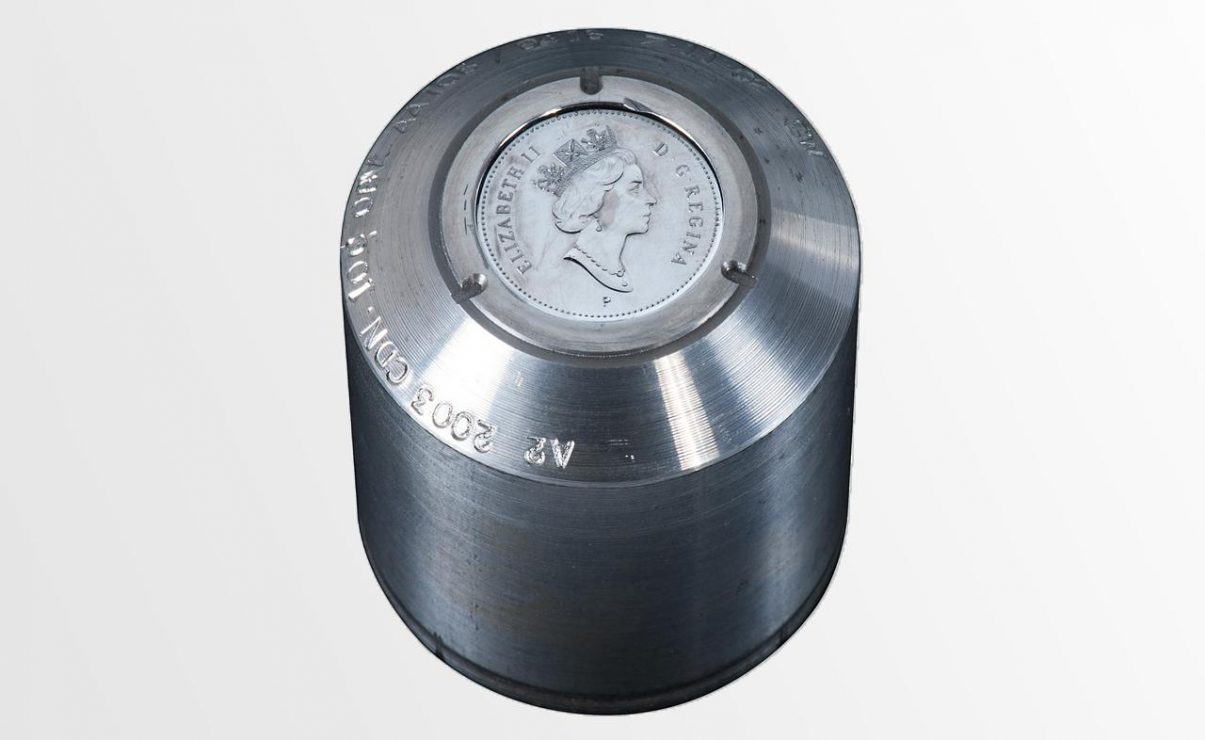
In 1999, the “P”, under the portrait on this punch, was added by the RCM to indicate a change in metal from nickel to multi-ply plated steel. (NCC 2010.058.006)
This portrait has appeared on all Canadian coins minted between 1990 and 2003.
The Museum Blog
Becoming a Collector V
By: Graham Iddon
Suppose you walk into a bar frequented by currency collectors and in an attempt to join in you refer to a ‘planchette’ as a ‘rosette’ (beer mugs hit the tables and the pianist stops playing). This could be pretty humiliating and you’ll probably never be able to go to that bar again, at least not on numismatic night.
Becoming a Collector IV
By: Graham Iddon
Now that you have a grasp of preservation techniques for coins, you might want to familiarize yourself with the finer points of their anatomy. It is all part of your numismatic education and besides, you need to be informed and sound informed when you are buying coins at flea markets or coin fairs.
Museum Reconstruction - Part 3
By: Graham Iddon
Though naturally we are aware that the former Museum space is being gutted, the reality of seeing it empty is still pretty strange for most of us here. In the last blog of this series we showed you the empty cafeteria space that will become the new Museum, as well as some images of the old Museum as it was at the time: stuffed with odds and ends of exhibit cases, the occasional display still on the walls.
CENTimental Journey
By: Graham Iddon
With all the blogging we’ve been doing for Voices from the Engraver, you’d think we had nothing else on our exhibition plate. We do, actually, and it’s called CENTimental Journey. This temporary exhibition, hosted at the Canadian Museum of History, walks you through more than 150 years of the Canadian 1 cent piece.
Museum Reconstruction - Part 2
By: Graham Iddon
We are coming up on a year since we closed the doors on the physical museum. During that year, we’ve worked very hard to make sure everybody knows that we are still a functioning museum and one that will be opening its doors again in a few years on a beautiful new space, with an expanded mission and mandate.
Becoming a Collector III
By: Graham Iddon
For you as the steward of your collection, your aim is to preserve the items as best as you can by protecting them from further deterioration. The pros call this preservation.
The Adventure of Exhibit Planning IV
By: Graham Iddon
This exhibition is about engravers, production processes and the beauty of postage stamps and bank notes. In the previous episode of this series we talked about the process surrounding securing the bank notes for this exhibition and how it had to take into account both the needs of the exhibition team and the concerns of the collections department.
